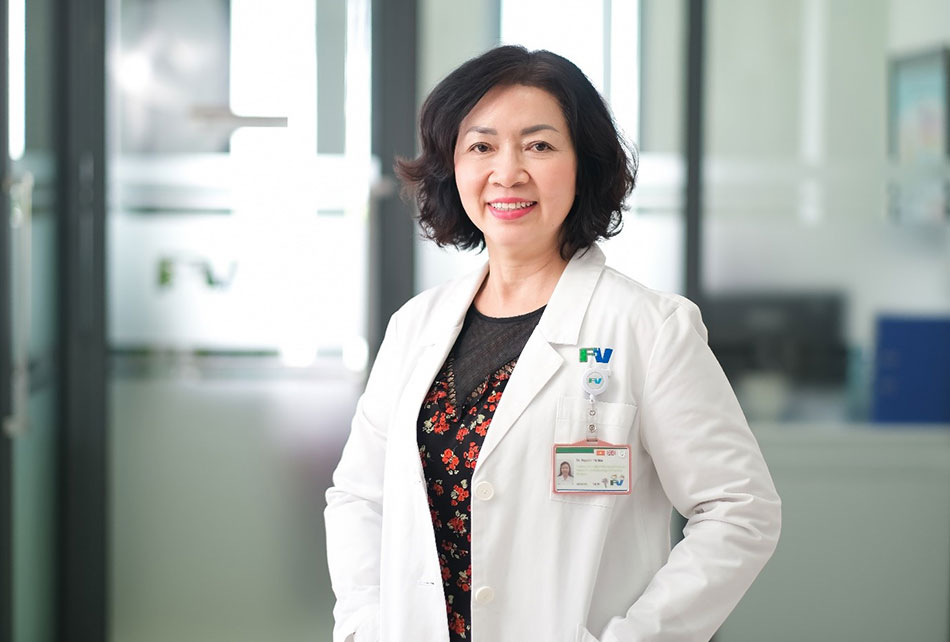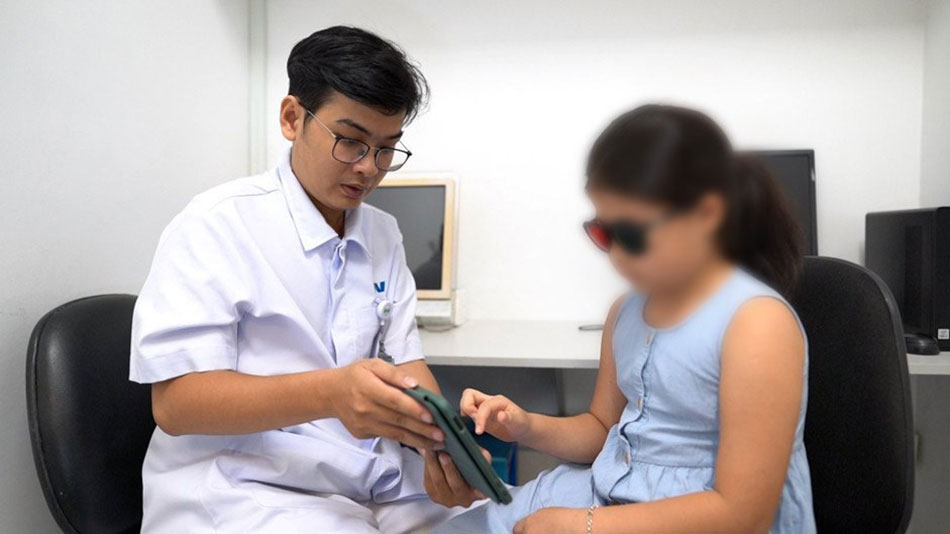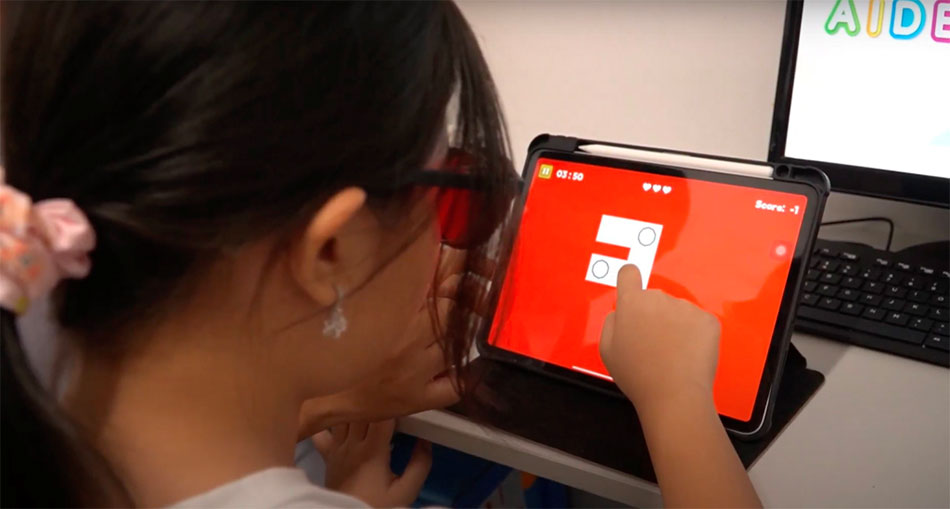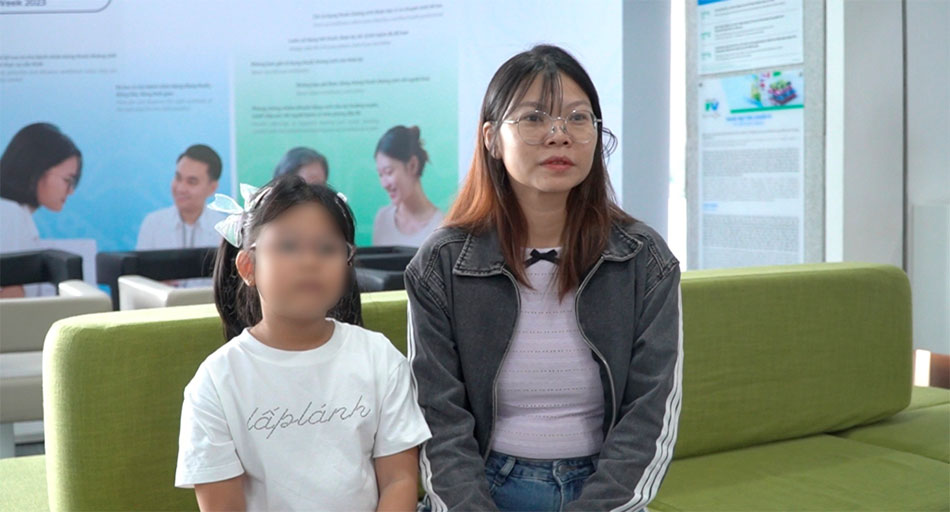According to 2019 statistics from Hanoi Medical University, approximately three million Vietnamese children suffer from amblyopia, also known as lazy eye, a condition related to eye problems that are often overlooked. Amblyopia can lead to irreversible vision loss if not detected and treated promptly during the critical period between four to 12 years of age.
The number of children coming for examination and treatment of amblyopia at FV has increased over time, prompting the Hospital to launch a service for treating children for this condition via vision-stimulating methods. Many paediatric patients have visual acuity below 2/10, but after three months of amblyopia exercises, their visual acuity can improve significantly to 710 to 10/10.
Treatment of amblyopia in children: An area of healthcare that is underserved.
Amblyopia, a condition characterised by reduced vision resulting from various factors during the sensitive stages of visual development, often exhibits little or no improvement, even after the underlying cause is treated. Numerous studies indicate that the critical period is from birth to around five years old. Earlier onset results in a higher and more severe likelihood of the condition. Amblyopia can arise from one of the following causes: strabismus, also known as crossed eyes; anisometropia, where the refractive error between the eyes is one diopter or more for hyperopia and astigmatism, and three diopters or more for myopia; pathological conditions occurring in one or both eyes due to the obstruction of the eye’s transparent medium, such as congenital cataracts, corneal scars, severe ptosis, pre-retinal hemorrhage, and severe vitreous opacities.
Amblyopia is a treatable condition if detected early and managed promptly. However, it often remains overlooked, with few healthcare facilities offering specialised amblyopia treatment services. This oversight leads to missed opportunities for vision recovery in children undergoing treatment during the critical “golden period” for care.
Observing the increasing number of children diagnosed with amblyopia during eye examinations at the Ophthalmology & Refractive Surgery department, FV Hospital has decided to implement amblyopia treatment services for children. Dr Nguyen Thi Mai, Specialist Level II, the head of department, stated:
“The development of a child’s vision occurs from infancy to around 12 years old. Many studies suggest that amblyopia due to strabismus can recover if treated before nine years old, and amblyopia due to anisometropia can recover well if treated before 12 years old. Therefore, for children under 12 years old with amblyopia, treatment is imperative because of the potential for recovery. Children aged 12 and above still have a chance for recovery, but it’s not as high. These children should still undergo a trial treatment if they haven’t received any prior treatment.
“If amblyopic children are left untreated, they will likely have poor vision as adults. Implementing amblyopia treatment services for children at FV Hospital holds significant community value, offering amblyopic children a chance at normal, healthy eyesight.”

Dr Nguyen Thi Mai, Specialist Level II, says that FV’s amblyopia treatment service will open up opportunities for many children to regain normal vision.
What is special factor about the visual stimulation method in treating amblyopia?
The amblyopia treatment method at FV involves several steps, among which the visual stimulation technique, including specialized exercises using amblyopia training software and accompanying eye exercises, stands out. These exercises are tailored for each patient based on their specific condition, aiming to enhance the connection between the eyes and the brain, improving the brain’s ability to recognise and process images.
The amblyopia training software is an application designed to stimulate visual function. When using this software, children wear special polarised glasses that stimulate the child’s visual acuity. This method is highly suitable for children as it creates an enjoyable and interesting training environment, fostering children’s interest and persistence. The exercises designed for amblyopia have several advantages: they do not require surgery, cause no pain, and can be performed at home.

An optometrist at the Ophthalmology & Refractive Surgery Department at FV Hospital guides children in practicing amblyopia exercises.
Amblyopia exercises involve simple eye exercises such as eye patching, focusing on near-far objects, activities like colouring, drawing, and high-precision games guided and supervised by a refractive specialist in the Ophthalmology & Refractive Surgery Department. These exercises are to be performed by children daily at home. Amblyopia exercises aim to improve eye flexibility and support the visual recovery process,” explained Nguyen Truong Vinh Binh, Optometrist at FV Hospital.

Amblyopia exercises using software are designed to engage children as if they are playing a game.
Currently, FV Hospital offers an amblyopia training package consisting of 10 sessions, each lasting between 45 to 60 minutes. During these sessions, the child attends one in-person session per week at the hospital with the refractive specialist at the Ophthalmology & Refractive Surgery Department, while the rest of the sessions are conducted at home. Parents supervise their children during these home sessions and record the exercises, which are then sent to the refractive specialist for monitoring. The child’s vision is evaluated weekly by the ophthalmologist.
This method has been highly effective, providing surprising progress in restoring visual acuity for children, as noted by parents. Dr Mai mentioned that many paediatric patients initially had visual acuity below 2/10, but after three months of consistent amblyopia exercises, their visual acuity improved significantly to 7/10 to 10/10.

Ms Phan Thi Ngoc Tram shares positive results from her child’s amblyopia training sessions at FV Hospital.
Ms Phan Thi Ngoc Tram (Ho Chi Minh City), the parent of seven-year-old Nguyen Tram Anh, joyfully shared: “My child was diagnosed with amblyopia after a coincidental eye check-up. However, the hospital where my child had the eye examination did not provide amblyopia treatment services for children. I approached FV Hospital based on a recommendation from an acquaintance. After receiving advice from the doctor regarding the amblyopia treatment method, I decided to give it a try for my child. The results were truly surprising: after five treatment sessions, my child’s vision improved from 5/10 to 9/10.
According to Dr Nguyen Thi Mai, amblyopia in children is often difficult to detect because children seldom complain about their vision, especially when a child has amblyopia in one eye, making it even harder to identify. “Parents should take their children for regular vision check-ups starting from the age of three, especially if children show signs such as squinting, tilting the head, wrinkling the face, or bringing objects closer to their face while looking at them,” advises Dr Mai.
For further information about amblyopia treatment for children, please contact Eye and Ophthalmology & Refractive Surgery Department, FV Hospital at: (028) 54 11 33 33, ext. 2000.



